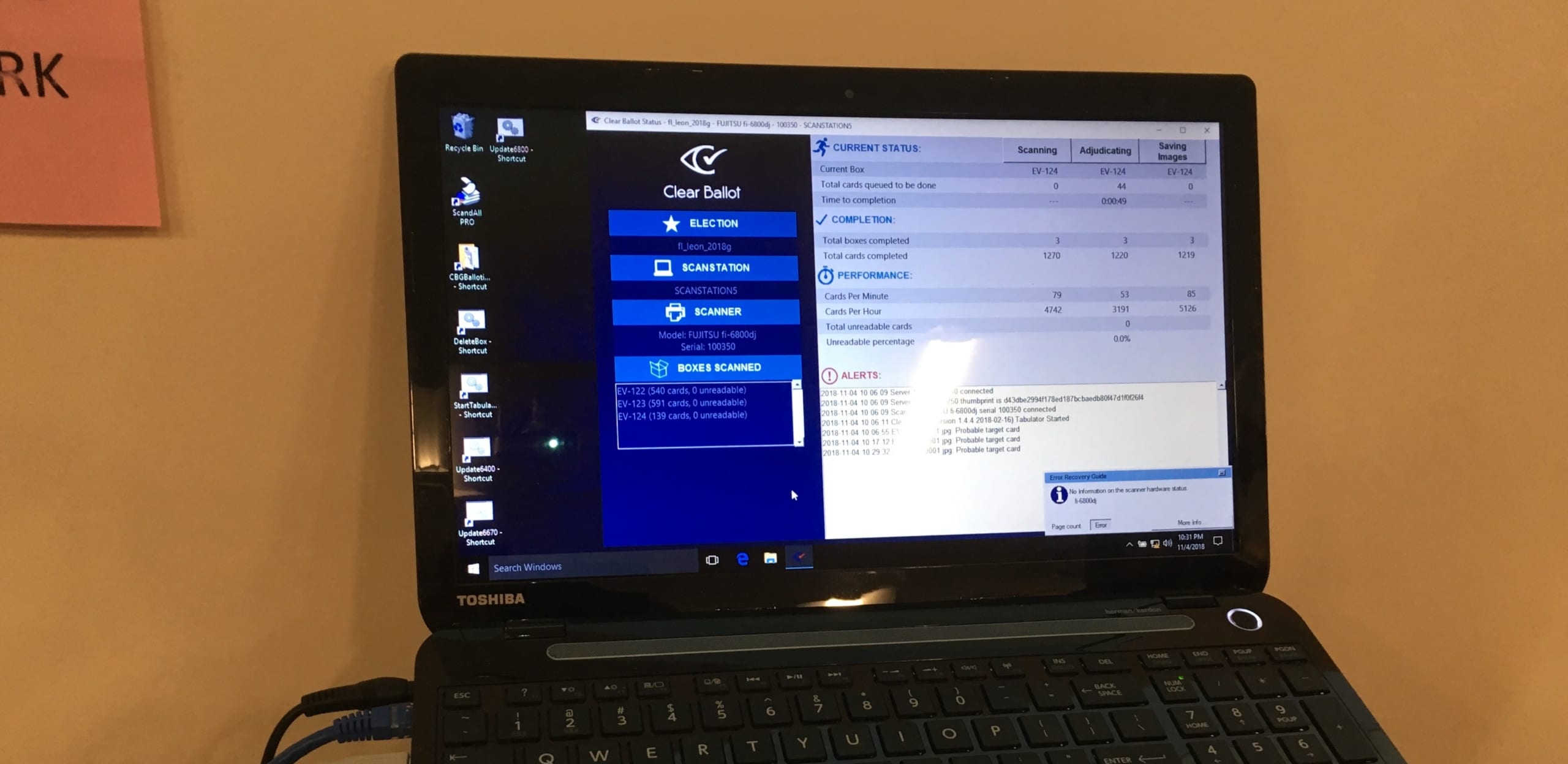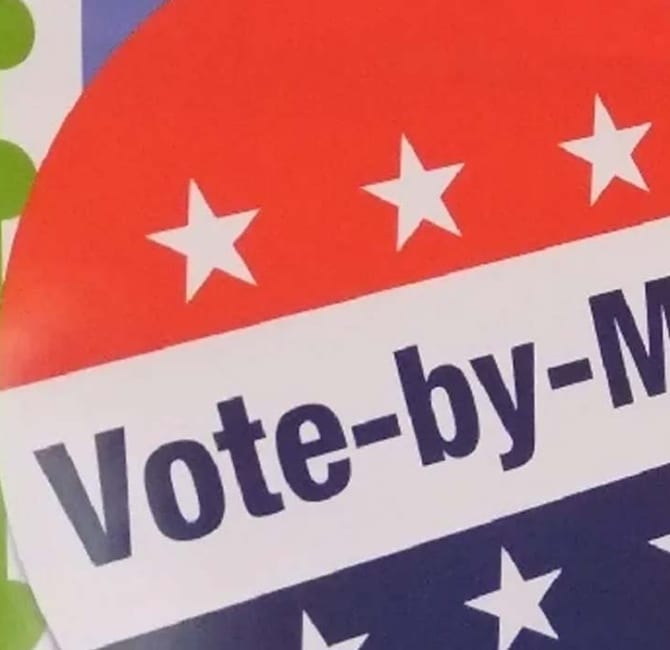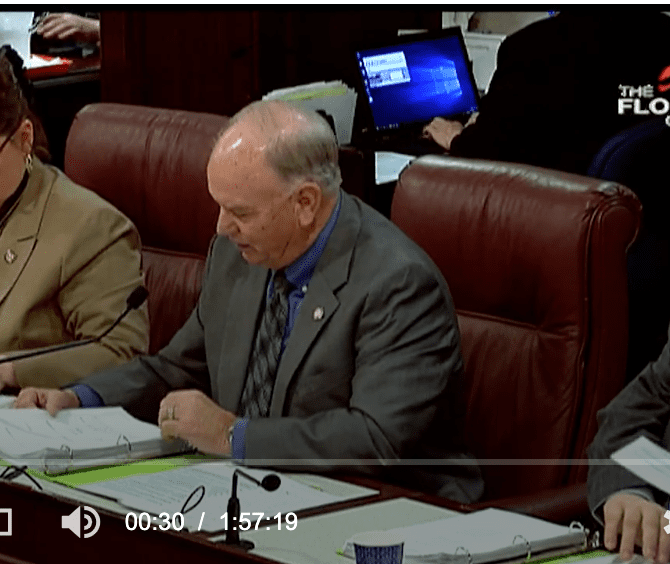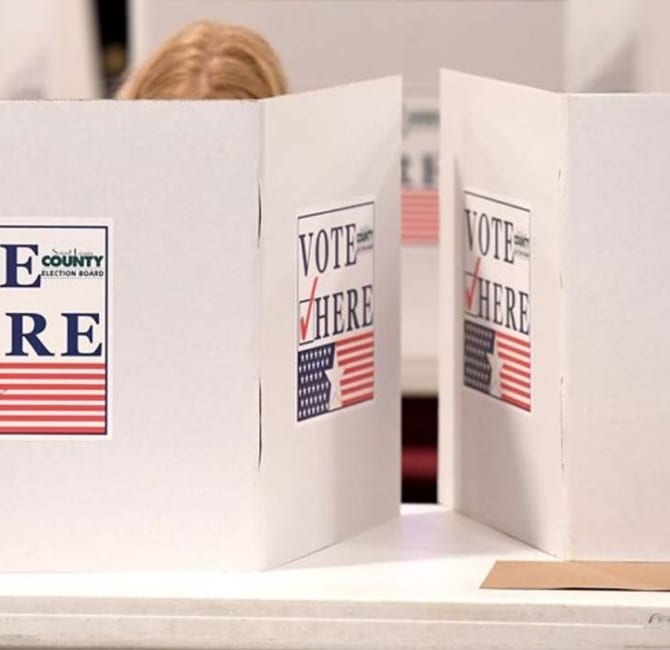As Some Florida Counties Bungle Vote Counts, Others Point Way to More Trustable Results

(Photo / Steven Rosenfeld)
Political grandstanding aside, the chaotic scenes and missteps from southern Florida’s recounts pose one question above all: Can its vote counting be more trustable?
The answer is yes. And the remedy is closer than almost everyone paying attention might realize, from reporters covering Broward County’s bungles; to bone-tired county officials in Palm Beach County where old ballot scanners overheated and had to be turned off; to rooms of political party observers watching round two of an already imprecise process—the numbing eye-balling of empty or ambiguous ballots; to voters across the state and county seeing slices of these spectacles on their TVs and digital devices.
Critics on the left and right called Broward’s simultaneous statewide recounts a crime scene. That shrill swipe is an unhelpful distraction from understanding and addressing the complexities faced by some Florida counties that count more votes than rural states. But it underscores the stakes in not fixing what’s broken before 2020. Florida is the nation’s most politically competitive state. Nowhere had closer senatorial or gubernatorial races.
Yet beyond identifiable causes that fed snafus inside vote-counting rooms and political theatrics outside, you might be surprised to learn that several Florida counties, including Broward, had vote-count technology in place that could have figured out in “minutes” what was behind the biggest mystery in the first unofficial results—Broward’s 31,000 Senate under-votes (where no one voted), a proportion unique in the state.
“In a matter of minutes,” said Mark Earley, the Supervisor of Elections in Leon County (where Tallahassee, the state capital, is located) and who, with his peers, developed the vote-count auditing technology that was on hand, but could not be used in 2018’s recounts. Why? It was not approved for that purpose under Florida’s election code.
It could have been done “very easily,” said Earley last week amid the recount’s second round. In a nutshell, this approach relies on two successive scans of all the paper ballots, by separate systems with differing software. The first scan, or tabulation, is what Florida’s recount sifted through. However, the second scan and its independent analysis, which wasn’t done, would have not only confirmed if the first counts were accurate, but it would have created images of each vote in every contest, and a library where any paper ballot could quickly be retrieved.
“The whole point of the audit is you can do a digital sort of this [the ballots] and look for any potential votes—and you do it digitally,” he said. “And that way you’re not having [to] handle and re-handle, and manipulate and re-manipulate all your paper ballots, which are extremely important in this process. That is your document of record.”
“You can keep those [ballots] inventoried and categorized and know exactly where they are in the box because of the way you have done your scans,” he continued. “You can search where those needles in the haystack are, and present them to the public at large through the digital image process. If you need to pull the paper, you can do it.”
This double-checking audit system is used in seven Florida counties. Next year, Earley said the Florida State Association of Supervisors of Elections, where he is treasurer, is poised to ask lawmakers to sanction its use for recounts among other reforms. Should they succeed, 2018’s recount problems would be less likely to recur.
Some of the biggest political attacks launched against Broward came because its workers lost control of their ballot inventory—more than 3.5 million pieces of paper, the result of five- and six-card ballots for 700,000 voters. (There were 4,400 ballot styles, a result of all the differing local contests.) When some ballot categories took longer to count, the GOP alleged that votes were being forged. When several hundred rejected ballots were inadvertently co-mingled with counted votes, more partisan accusations arose. When Broward missed an electronic filing deadline with the state—owing to senior staff unfamiliarity with the state’s web portal—a wider chorus of groans was heard.
These incidents, sparking political theatrics, undermined confidence in trusting the counting. But they also were sideshows that did not explain why Broward had the state’s highest Senate under-vote rate—which the recount’s second round, a manual hand-and-eye examination of under-votes and over-votes, seemed to resolve. Those missing votes were real, and apparently were partly due to the county’s ballot layout. The Senate race was at the bottom of a page, isolated and below voting instructions, where thousands of voters missed it. (Democratic Party officials had signed off on the ballot design.)
How could a digital image audit system have been helpful in quickly understanding what was going on with Broward’s Senate under-votes—and have possibly helped avoid mistakes in its ballot handling and counting process?
“It’s not just an audit of the final results,” Earley explained. “You’re able to audit the whole process—your ballot inventory as you are going through. But in a situation like that [in Broward], where there’s some debate as to whether the tabulator results from the certified voting system were accurate or mal-programmed or whatever, you can validate it with a completely separately programmed system.”
“That’s completely different software, but assessing the exact same pieces of paper, but in a different way,” he continued. “And if both of those come up with the same vote totals, or very, very close, then you have validated that your tabulation numbers are correct, instead of having that doubt.”
When asked how long that would have taken to assess whether 31,000 under-votes were real (after the time taken to scan the ballots), he replied, “A matter of minutes.”
“They will have already have been sorted out digitally,” Earley said. “So you can see the universe. You click a button. It says, ‘Look for any potentially missed votes.’ It looks at a rectangle that surrounds that oval and the candidate’s name all the way out to the party affiliation. And it looks for any kind of mark in there and brings that right up to your view, in seconds, literally… Then you can click on each one of those rectangles for a candidate and see what is actually on the piece of paper… We are never perfect. But we can pit one technology against another and see, validate, and have transparency, and look for ways to improve. That’s the point of this whole process.”
This two-step counting system wasn’t available for 2018’s recounts. But Earley hopes that will change—if he and like-minded election managers can overcome resistance from some counties and opposition from voting machine industry lobbyists that don’t want such a powerful microscope trained on their protocols (fearing it will expose missteps) and their voting systems (fearing it will expose technical shortcomings).
But the approach that Earley outlined—which this reporter saw in use from early voting through the recounts in two counties, including on Election Day in hurricane-hit Panama City—is a baseline to measure what did not happen, or went wrong, and the remedies, in the handful of southern Florida recounts that drew national attention and scorn.
The Best and Worst in One State
One of the ironies of Florida’s 2018 black eye—from the press, politicians and critics—is the state is a showcase of some of the best and least desirable vote-counting practices. In contrast, Georgia is a showcase for voter suppression, which involves different rules and barriers that prevent eligible voters from getting a ballot and casting votes that count.
Some Florida counties showed how aging vote tabulation systems, in combination with outdated laws, fed a negative feedback loop that could not rise to the recounts’ demands. Not allowing one of the country’s best audit systems to be used was only one example where Florida law didn’t help. (Not only is it a complete accounting of all votes cast, but it also cannot be hacked, as the only common point between the two scans are paper ballots.)
Florida law also has deadlines that never envisioned simultaneous recounts, where the biggest counties had to first isolate the ballot cards for the recounted races, and then re-tally totals while setting aside questionable ballots from multiple races. Its recount laws mostly were written when the state’s population was not as big as today, lawyers noted, and before Floridians started voting by mail—which growing multitudes now prefer. In short, 2018’s recounts presented a logistical nightmare: First, re-tallying those races while setting aside under-votes, over-votes and write-ins, which were to be manually examined in a second round; then tracking ballots with questionable marks in more than one race.
To do this task well takes an engineering mentality. There are successive decision points where ballot custody, counting various ballot categories, and procedural controls must be maintained. Some of the bad press that Broward got was because this assembly line broke down and ballots were misplaced. That was not a conspiracy to steal votes. It was being overwhelmed by volume, having inadequate training and facing unrealistic deadlines.
Then comes another critical issue, where the machinery is pushed to its limit and cannot handle the task—despite manufacturer claims. Palm Beach was the foremost example of this untenable situation. Unlike other counties, its old paper ballot scanners could not be programmed to handle more than one recount. That meant putting 600,000-plus ballots through successive runs. As they were working round-the-clock, what happened? Their machinery literally overheated and had to be turned off.
The county tried but couldn’t meet the state’s timetable to file recount results. Palm Beach wasn’t alone in that regard. But under Florida law, that meant that the very first tabulation, or unofficial totals from Election Day and early voting, became the baseline for the next stage in the process. That round is where manually examined under-votes, over-votes and write-ins would be added in—all to reach the official result. Palm Beach officials knew their recount was not going well, but they labored ahead anyway.
“What we’re asked to do is recreate two to three weeks of work in a couple of days,” Palm Beach County Supervisor of Elections Susan Bucher told the Miami Herald, which noted that she has been sleeping on a cot in the county’s tabulation center, a windowless warehouse. It’s several week of work because early voting started in mid-October, and the overseas and military ballots can be counted up to 10 days after Election Day. “I’ve been trying to change the deadlines for about 10 years,” she said.
Bucher didn’t buy the tabulation system that she now uses to administer elections. Her predecessor did. But the circumstances that Palm Beach County found itself in are not unique to Florida. Much of the country’s voting infrastructure is old, being used long past its intended shelf life, and is due to be replaced before 2020. That’s why the lessons of how some Florida counties struggled to recount votes—and what alternatives could be used to produce more accurate and trustable results—are of national interest.
What to Look for in Lessons Learned
While the 2018 midterms are mostly over, the takeaways have barely begun. With few exceptions, the voting, counting, recounting—and attendant legal fights—are done or wrapping up. The post-mortems are coming in, typically emphasizing glitches and striking a tone of, “Oh, no. Not again…”
Elections, as Americans have again seen, are complex undertakings. But before getting discouraged and surrendering to complexities, the public should keep in mind that it’s not difficult to have a clear frame to identify problems and judge solutions—one that cuts through self-interested rhetoric.
If you believe that every vote matters and should count, then look for the specific gaps or lapses that interrupt those key phases of every election: getting a ballot and casting a vote that will be counted (the challenge in Georgia); and ensuring there is an accurate count, or more precisely, accounting, of every vote cast (the challenge in Florida).
If you can pinpoint where voters get shut out or counting accurately gets disrupted, you can pinpoint problems and evaluate remedies. You can answer the perpetual question, “What can be done and done better?” and assess specific solutions.
This frame—what are the gaps and what are the fixes—may sound simplistic. Yet it is what federal judges were looking for, especially in post-Election Day lawsuits filed in Georgia and Florida. There, in case after case on the participation and ballot rejection side of the process, judges pinpointed where voters were blocked; where ballots were rejected by technicalities; and where voters had no window to cure disqualifications.
One way to look past the shrill headlines is to ask what’s the alternative. When it comes to transparent and trustable counts, the state that has been getting beaten up for troubles in a few big counties also developed the simplest and most easily understood vote verification process to restore public confidence. All that takes is a second independent scan of all the paper ballots; one that doesn’t merely confirm totals, but creates a searchable index of ballot images of every vote and an easily accessible library of the ballots themselves.
The benefits of doing that secondary scan and building that library, Earley summarized, included, “The traceability. The continuity of seals and chain of custody through the whole process, and being able to reconfigure what happened previously… By keeping these boxes aligned—you know, the ballots came out of this box, which came out of this scanner Election Day, and so on. That’s what’s important, to keep that detail.”
In Leon County, that double-checking was used daily—in early voting, on Election Day, and for all the ballot categories. By the time the recounts were ordered, it had built that library for every vote and ballot. But because only certified tabulation systems could be used for Florida’s recounts, Earley’s staff had to dismantle that inventory and use a less precise process.
“That’s the ironic part, and it’s a shame,” he said. “It’s a shame when the current statutory manual recount processes decrease the transparency and the deep dive you can take—for technology that we are certified to use, but we aren’t allowed to use it in this process yet. So that’s what we are trying to get to.”
Also Available on: www.nationalmemo.com






